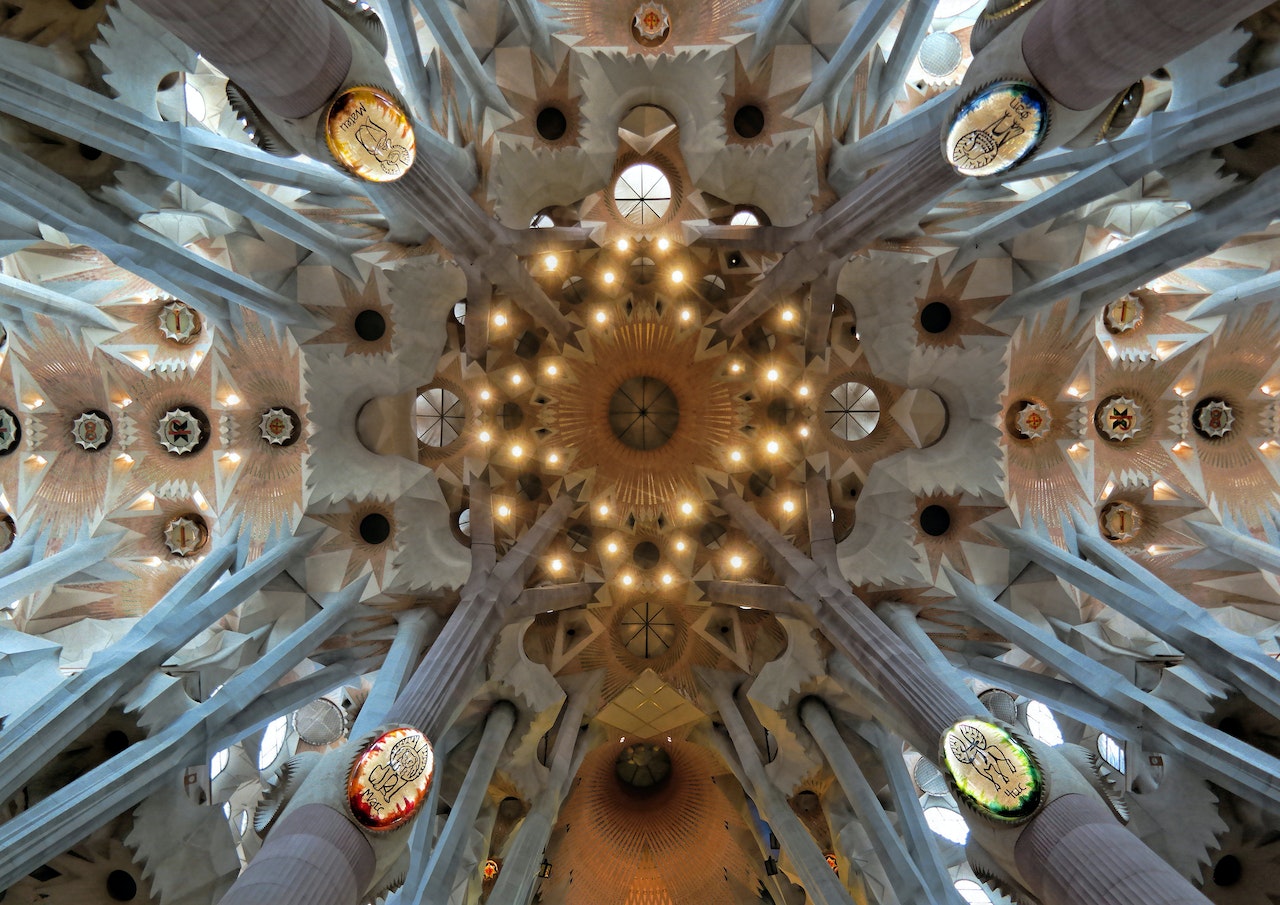The Influence Of Social Movements On Architecture - A Historical Perspective
The influence of social movements on architecture can be seen in the way they have pushed for new styles and forms, advocated for the use of new materials, and brought attention to important social issues.
Author:George EvansMar 02, 202315K Shares365.8K Views

The influence of social movements on architecturecan be seen in the way they have pushed for new styles and forms, advocated for the use of new materials, and brought attention to important social issues.
Architecture has been shaped by various cultural, political, and economic factors throughout history. One of the most significant influences on architecture is social movements, which can lead to significant changes in the design and construction of buildings and cities.
The Industrial Revolution, for example, brought about new construction techniques and materials that allowed architects to design buildings with new forms and shapes.
The Arts and Crafts movement, which emerged in the late 19th century, was a response to the negative effects of the Industrial Revolution and advocated for the return to traditional building techniques and the use of natural materials.
This movement inspired a renewed interest in traditional forms and styles, such as Gothic and Romanesque architecture, and the use of materials such as stone, wood, and glass.
The influence of social movements on architecture can also be seen in the way they have brought attention to important social issues.
The feminist movement, for example, has called for the inclusion of women in architecture and design, and for the creation of spaces that are more inclusive and welcoming to women.
The environmental movement has raised awareness about the impact of buildings on the environment and has pushed for the use of sustainable materials and building techniques.
The Influence Of Social Movements On Architecture An Overview
Social movements have been a powerful force in shaping the built environment. From advocating for new building techniques and materials to bringing attention to important social issues, social movements have played a significant role in the evolution of architecture.
The influence of social movements on architecture can be seen in the way they have shaped the design and construction of buildings and cities, reflecting the values and beliefs of society.
The Industrial Revolution And Its Impact On Architecture
The Industrial Revolution, which began in the late 18th century, had a profound impact on architecture. With the introduction of new construction techniques and materials, such as iron and steel, architects were able to design buildings with new forms and shapes.
The development of the elevator, for example, allowed buildings to be taller and more complex than ever before. The Industrial Revolution also brought about mass production and standardization, which made building construction faster and more efficient.
However, the negative effects of the Industrial Revolution were not limited to the workplace. The new, industrial-style buildings were seen by some as impersonal and lacking in character.
The Arts and Crafts movement, which emerged in response to these negative effects, advocated for the return to traditional building techniques and the use of natural materials.
The Arts And Crafts Movement And Its Influence On Architecture
The Arts and Crafts movement, which began in Britain in the late 19th century, was a response to the negative effects of the Industrial Revolution. The movement advocated for the return to traditional building techniques and the use of natural materials, such as stone, wood, and glass.
The Arts and Crafts movement inspired a renewed interest in traditional forms and styles, such as Gothic and Romanesque architecture, and the use of materials that were seen as more authentic and sustainable.
The Arts and Crafts movement also advocated for the integration of craftsmanship into architecture, arguing that buildings should be designed and constructed as works of art.
This emphasis on craftsmanship and attention to detail was reflected in the buildings of the Arts and Crafts movement, which were characterized by their intricate patterns, textures, and materials.
The Feminist Movement And Its Impact On Architecture
The feminist movement has had a significant impact on architecture in recent decades. Feminists have called for the inclusion of women in architecture and design and for the creation of spaces that are more inclusive and welcoming to women.
The feminist movement has challenged the traditionally male-dominated field of architecture and has pushed for the design of buildings that reflect the needs and experiences of women.
For example, the feminist movement has called for the design of buildings that accommodate women's unique physiological needs, such as lactation rooms and restrooms with baby-changing stations.
The feminist movement has also brought attention to the issue of safety in public spaces, such as street lighting and the design of buildings to discourage harassment and violence.
In recent years, the feminist movement has also pushed for the inclusion of women's voices and perspectives in the design of public spaces. This has led to the creation of buildings that are more welcoming and accessible to women, reflecting the values and beliefs of a more inclusive society.
The influence of social movements on architecture has been significant and far-reaching. From the Industrial Revolution to the feminist movement, social movements have pushed architects to innovate and create buildings that reflect the values and beliefs of society.
The influence of social movements on architecture will continue to shape the built environment in new and exciting ways in the future.
The Environmental Movement And Its Influence On Architecture
The environmental movement, which gained momentum in the late 20th century, has had a significant impact on architecture.
The movement has called for the design of buildings and cities that are more sustainable and environmentally friendly and has pushed architects to consider the impact of their designs on the natural world.
One of the key principles of the environmental movement is energy efficiency, which has led to the widespread use of insulation, double-paned windows, and other energy-saving technologies in buildings.
The environmental movement has also encouraged the use of renewable energy sources, such as solar and wind power, in the design of buildings.
In recent years, the environmental movement has also pushed for the design of buildings that incorporate green spaces and gardens, which help to mitigate the urban heat island effect and improve air quality.
This trend has led to the creation of green roofs, vertical gardens, and other innovative solutions that bring nature into the built environment.
The Modernist Movement And Its Impact On Architecture
The Modernist movement, which emerged in the early 20th century, was a response to the rapid changes brought about by the Industrial Revolution. The Modernist movement sought to break free from the traditional forms and styles of architecture and to create a new, more functional, and modern aesthetic.
The Modernist movement was characterized by the use of new materials, such as concrete and glass, and by the rejection of ornamentation and decoration.
Modernist buildings were designed to be functional and efficient, with a focus on clean lines, open spaces, and natural light. The Modernist movement was influential in the development of modern architectureand continues to be a significant force in the field today.

Social movements | Society and Culture | MCAT | Khan Academy
Using Architecture To Reflect Society's Values And Beliefs
Architecture has always been a reflection of the values and beliefs of society. From the grand cathedrals of the medieval period to the sleek, modernist buildings of the 20th century, architecture has always been a way of expressing the values and aspirations of a particular time and place.
Today, architecture continues to reflect the values and beliefs of society, from the focus on sustainability and environmental protection to the increasing emphasis on accessibility and inclusivity.
The design of buildings and cities can have a profound impact on the people who use them, and architects have a responsibility to ensure that their designs reflect the values and beliefs of society.
People Also Ask
What Is The Relationship Between Social Movements And Architecture?
Social movements have influenced architecture by shaping the values and beliefs of society, which are then reflected in the design of buildings and cities.
How Did The Industrial Revolution Influence Architecture?
The Industrial Revolution brought about rapid changes in society, which led to the development of new materials, construction techniques, and design principles. These changes had a significant impact on architecture and helped to shape the built environment as we know it today.
How Has The Environmental Movement Influenced Architecture?
The environmental movement has had a significant impact on architecture by promoting sustainability and environmental protection.
How Does Architecture Reflect The Values And Beliefs Of Society?
Architecture has always been a reflection of the values and beliefs of society, from the grand cathedrals of the medieval period to the sleek, modernist buildings of the 20th century.
Conclusion
In conclusion, the influence of social movements on architecture is significant and can be seen in the way they have shaped the design and construction of buildings and cities.
From the Arts and Crafts movement to the feminist and environmental movements, social movements have pushed architects to innovate and create buildings that reflect the values and beliefs of society.
The influence of social movements on architecture will continue to shape the built environment in new and exciting ways in the future.
Jump to
The Influence Of Social Movements On Architecture An Overview
The Industrial Revolution And Its Impact On Architecture
The Arts And Crafts Movement And Its Influence On Architecture
The Feminist Movement And Its Impact On Architecture
The Environmental Movement And Its Influence On Architecture
The Modernist Movement And Its Impact On Architecture
Using Architecture To Reflect Society's Values And Beliefs
People Also Ask
Conclusion

George Evans
Author
George Anderson, an exceptional architectural designer, envisions and brings to life structures that transcend the realm of imagination. With an unwavering passion for design and an innate eye for detail, George seamlessly blends form and function, creating immersive spaces that inspire awe.
Driven by a deep appreciation for the interplay of space, light, and materials, George's innovative approach redefines the possibilities of architectural design. His visionary compositions leave an indelible mark, evoking a sense of wonder and transforming the built environment.
George Anderson's transformative designs and unwavering dedication continue to shape the architectural landscape, pushing the boundaries of what is possible and inspiring generations to come.
Latest Articles
Popular Articles
